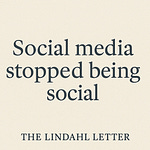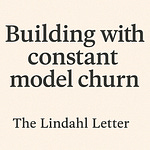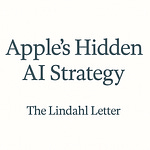I read and really enjoyed the book by Nate Silver from 2012 about predictions. It’s still on my bookshelf. Strangely enough the cover has faded more than any other book on the shelf.
Silver, N. (2012). The signal and the noise: Why so many predictions fail-but some don't. Penguin.
That book from Nate is sitting just a few books over from Armstrong’s principles of forecasting. A book that I have referenced a number of times before. It will probably be referenced more as we move ahead as well. It’s a resource that just keeps on giving. Math it’s funny like that.
Armstrong, J. S. (Ed.). (2001). Principles of forecasting: a handbook for researchers and practitioners (Vol. 30). Boston, MA: Kluwer Academic.
My podcast feed for years has included the 538 podcast where I listened to Nate and Galen talk about good and bad uses of polling [1]. Sadly, it does not currently feature Nate after the recent changes over at 538. They reported on and ranked a lot of polling within the 538 ecosystem of content. Model talk and the good or bad use of polling were staples in the weekly pod journey. I really thought at some point they would take all of that knowledge about reviewing, rating, and offering critiques of polling to do some actual polling. Instead they mostly offered polling aggregation which is what we are going to talk about today. On the website they did it really well and the infographics they built are very compelling.
Today setting up and running a polling organization is different from before. A single person could run a large amount of it thanks to the automation that now exists. An organization with funding to set up automation and run the polling using an IVR and some type of dialogue flow [2]. Seriously, you could build a bot setup that placed calls to people and completed a survey in a very conversational way. That still runs into the same problem that phone survey methods are going to face. I screen out all non-contact phone calls and I’m not the only person doing that. Cold calls are just not effective for business or polling in 2023 and the rise of phone assistants that can effectively block out noise are going to make the phone methodology even harder to effectively utilize.
It’s hard to make a hype based drum roll on the written page. You are going to have to imagine it for me to get ready for this next sentence. Now that you are imagining that drum roll… Get ready for a year of people talking about AI and the 2024 election. It probably won’t get crypto bad in terms of the hype trane showing up to nowhere, but it will get loud. I’m going to contribute to that dialogue, but hopefully in the softest possible way. Yeah, I’m walking right into that by reflecting on the outcome of my actions while simultaneously writing about them during this missive.
You can see an article from way back in November 2020 talking about how AI does show some potential to gauge voter sentiment [3]. That was before all of the generative AI and agent hype started. Things are changing rapidly in that space and I’m super curious about what can actually be accomplished in that space. I’m spending time every day learning about this and working on figuring out ways to implement this before the next major presidential election in 2024. An article from The Atlantic caught my attention as it talked about how nobody responds to polls anymore and started to dig into what AI could possibly do in that space, microtargeting, and Kennedy (1960) campaign references [4]. That was an interesting read for sure but you could veer over to VentureBeat to read about how AI fared against regular pollsters in the 2020 election [5]. That article offered a few names to watch out for and dig into a little more including KCore Analytics, expert.ai, and Polly.
We will see massive numbers of groups purporting to use AI in the next election cycle. Even The Brooking Institute has started to share some thoughts on how AI will transform the next presidential election [6]. Sure you could read something from Scientific American where people are predicting that AI could take over and undermine democracy [7]. Dire predictions abound and those will probably also accelerate as the AI hype train pulls up to election station during the 2024 election cycle [8][9]. Some of that new technology is even being deployed into nonprofits to help track voters at the polls [10].
Footnotes:
[1] https://projects.fivethirtyeight.com/polls/
[2] https://cloud.google.com/contact-center/ccai-platform/docs/Surveys
[4] https://www.theatlantic.com/technology/archive/2023/04/polls-data-ai-chatbots-us-politics/673610/
[5] https://venturebeat.com/ai/how-ai-predictions-fared-against-pollsters-in-the-2020-u-s-election/
[6] https://www.brookings.edu/articles/how-ai-will-transform-the-2024-elections/
[7] https://www.scientificamerican.com/article/how-ai-could-take-over-elections-and-undermine-democracy/
[8] https://www.govtech.com/elections/ais-election-impact-could-be-huge-for-those-in-the-know
What’s next for The Lindahl Letter?
Week 136: Econometric election models
Week 137: Tracking political registrations
Week 138: Prediction markets & Time-series analysis
Week 139: Machine learning election models
Week 140: Proxy models
If you enjoyed this content, then please take a moment and share it with a friend. If you are new to The Lindahl Letter, then please consider subscribing. New editions arrive every Friday. Thank you and enjoy the week ahead.











